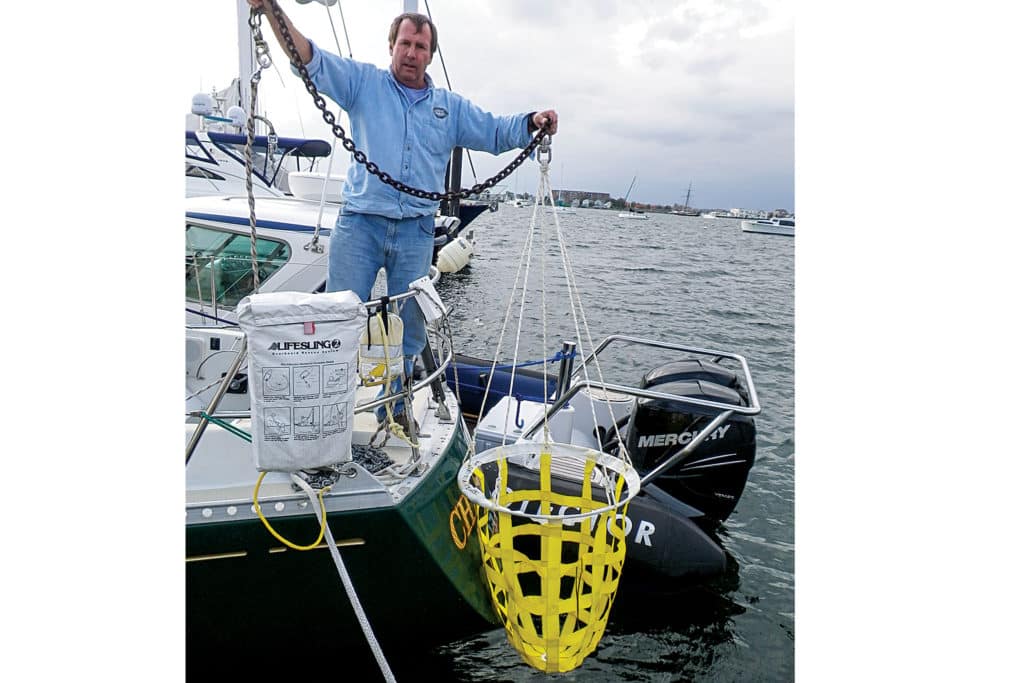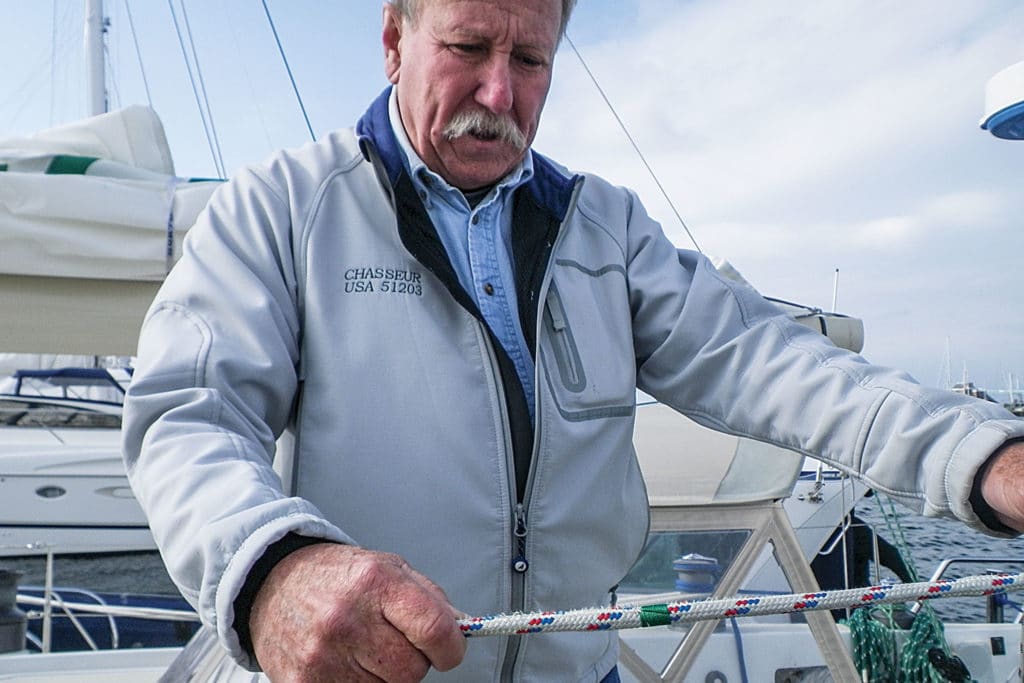“Lobster pot,” Ken Keyworth said as he steered Chassieur, his brother Michael’s Swan 44, clear of it and back on course. We were outbound on Narragansett Bay, motoring along at a leisurely 5 to 6 knots and preparing to hoist canvas and go for a sail. Now, New England sailors dodge buoys about as often as Boston drivers speed up on yellow lights.
Still, I was duly impressed with this particular artful dodge because the boat had neither wheel not rudder. Days earlier, Michael, manager of Brewer Cove Haven Marina, located a dozen miles up the bay in Barrington, Rhode Island, had removed both before setting off on a quest: Find an emergency steering remedy that would help bluewater cruisers and racers reach a safe port unassisted.
“Somebody’s got to do this,” said Michael, explaining that his plan is to write a report based on the sailing, motoring and towing tests that he, Ken and a few other mates perform using basic gear aboard Chassieur and a Galerider drogue. “Who’s the other idiot that’s going to go out and try it?”
He had a point.
So there we were, on a gray fall day, charging along what should have been an alarmingly close-at-hand rocky shore. Only it wasn’t. The boys had it all under control. Before leaving the dock that afternoon, Michael rigged snatch blocks amidships, and then ran his spinnaker sheets through them, taking the tails back to his two primary cockpit winches. The other ends of the sheets were led outboard of the lifelines to the stern, where they’d be attached to a Galerider Storm Drogue underway.
Once towed off the dock and cast free, the Keyworths steered an astonishingly nimble course that even included a tight, 360-degree turn in about three boat lengths, under engine alone. They recounted how, on their maiden rudderless voyage, they’d been unable to control Chaissieur using a couple of smaller drogues. But as they worked their way up in drogue size, they discovered the 30-inch Galerider did just fine, and they sailed the length of the bay to a borrowed slip in Newport to continue their studies.
Once Ken and Michael demonstrated the basics, they handed the lines over so I could have a feel. It took all of about five minutes to be able to anticipate what would happen when I tugged on a line and shifted the drogue’s position — so much for a learning curve.
With Michael back in the driver’s seat, up went the sails: a double-reefed main and enough of the genoa to just fill the foretriangle. We sailed reasonably straight toward the western side of East Passage, the drogue centered behind us. To tack, Ken first eased the jib; Michael brought in the main to head us into the wind; the jib was back-winded to drive the bow across; and after falling off to a beam reach, the boat slowly came up to about 35-degrees off the breeze. On the next tack, a tweak of the drogue brought the bow through the wind a little quicker.
To head home, Ken dropped the main and then used the jib to pull the bow off the wind and the boat onto a run. We jibed our way back to Newport, and finally, on about a beam reach, wound our way through the nearly empty mooring field and to the dock, where the chase boat took us back in tow.
The idea, said Ken, a shorthanded offshore sailor, would be for a couple or crew to sail hard using the drogue during daylight and fair conditions, then heave-to when needed en route back to port.
After watching the brothers in action, it all seemed pretty plausible.
This article first appeared in the January 2014 issue of Cruising World. Click here to read more from editor Mark Pillsbury.










